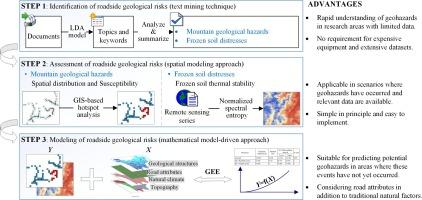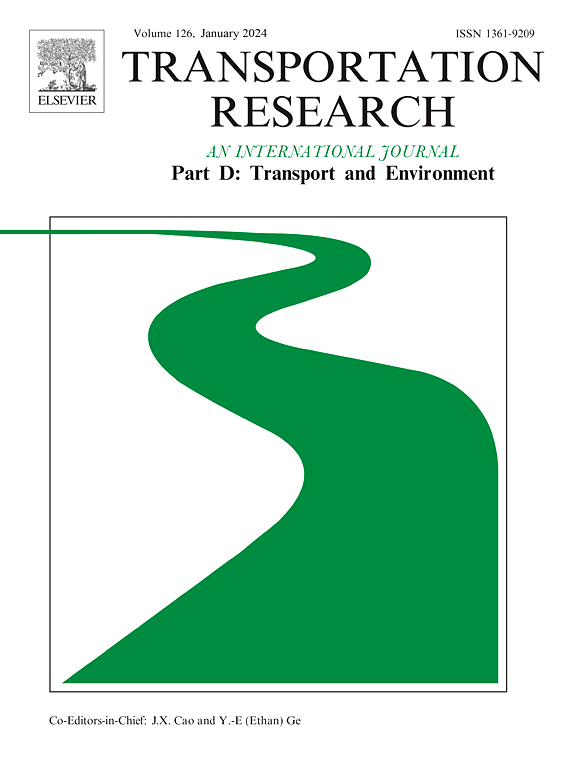青藏高原地区公路地质风险评估与建模
IF 7.3
1区 工程技术
Q1 ENVIRONMENTAL STUDIES
Transportation Research Part D-transport and Environment
Pub Date : 2024-11-01
DOI:10.1016/j.trd.2024.104422
引用次数: 0
摘要
本研究识别和评估了青藏高原地区公路地质风险的时空分布,并建立了影响因素模型,以提高公路运营的安全性。该研究利用 Latent Dirichlet Allocation 模型识别风险,利用热点分析和归一化频谱熵评估风险的时空分布,并利用广义估计方程分析地质风险易感性与影响因素之间的关系。最后,应用该方法进行了案例研究。研究结果表明,山区地质灾害可能影响到距离公路 2,000 米以内的区域。路基和隧道路段以及低等级公路更容易受到山区地质灾害的影响,而高等级公路路基路段的冻土热稳定性往往较低。这项研究为工程与地质环境之间的耦合效应提供了宝贵的见解,对于做出明智的路线布局决策和有效管理路边地质风险至关重要。本文章由计算机程序翻译,如有差异,请以英文原文为准。

Assessment and modeling of roadside geological risks in the Qinghai-Tibetan Plateau region
This study identified and assessed spatiotemporal distribution, and modeled influencing factors, of roadside geological risks for the Qinghai-Tibetan Plateau regions towards enhancing the safety of road operations. It utilized Latent Dirichlet Allocation model to identify risks, hotspot analysis and normalized spectral entropy to assess the spatiotemporal risk distribution, and Generalized Estimation Equations to analyze the relationship between geological risk susceptibility and the influencing factors. Finally, a case study was conducted to apply this methodology. The findings indicated that mountain geological hazards could affect areas up to 2,000 m from the roadway. Roadbed and tunnel sections, and lower-grade highways were more susceptible to mountain geological hazards, while higher-grade highways tended to have lower frozen soil thermal stability in their roadbed sections. This study provides valuable insights into the coupling effects between engineering and geological environments, crucial for informed route layout decisions and effective management of roadside geological risks.
求助全文
通过发布文献求助,成功后即可免费获取论文全文。
去求助
来源期刊
CiteScore
14.40
自引率
9.20%
发文量
314
审稿时长
39 days
期刊介绍:
Transportation Research Part D: Transport and Environment focuses on original research exploring the environmental impacts of transportation, policy responses to these impacts, and their implications for transportation system design, planning, and management. The journal comprehensively covers the interaction between transportation and the environment, ranging from local effects on specific geographical areas to global implications such as natural resource depletion and atmospheric pollution.
We welcome research papers across all transportation modes, including maritime, air, and land transportation, assessing their environmental impacts broadly. Papers addressing both mobile aspects and transportation infrastructure are considered. The journal prioritizes empirical findings and policy responses of regulatory, planning, technical, or fiscal nature. Articles are policy-driven, accessible, and applicable to readers from diverse disciplines, emphasizing relevance and practicality. We encourage interdisciplinary submissions and welcome contributions from economically developing and advanced countries alike, reflecting our international orientation.

 求助内容:
求助内容: 应助结果提醒方式:
应助结果提醒方式:


